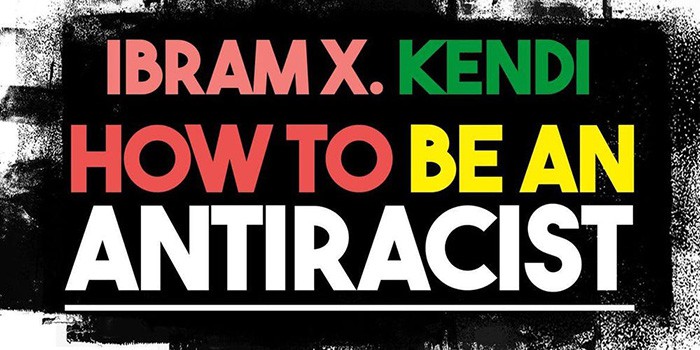
11
JunCommunity-Driven Collection Development
 I can breathe. How terrible to think that my being able to say those three words, to describe the most basic of life’s functions, come from a place of privilege. A privilege not shared by everyone in our country, a privilege not shared by my neighbors. The recent violent murder of George Floyd by a former police officer in Minneapolis has shown that racial prejudice is still very much alive in our country, and has pushed many to a breaking point – enough is enough.
I can breathe. How terrible to think that my being able to say those three words, to describe the most basic of life’s functions, come from a place of privilege. A privilege not shared by everyone in our country, a privilege not shared by my neighbors. The recent violent murder of George Floyd by a former police officer in Minneapolis has shown that racial prejudice is still very much alive in our country, and has pushed many to a breaking point – enough is enough.
Mr. Floyd was an African American man and the officer restraining him was white. By all accounts, Mr. Floyd was not violent, was not resisting arrest, and was doing everything he could to remain calm, yet he was killed slowly and without intervention in front of a crowd of people. I am by no means an expert on police conduct, but Norwood’s own Chief Brooks put out a clear statement last week describing how the actions of all the officers involved was so wrong and how the situation could have so easily been avoided if any of them had acted as keepers of the peace and officers of the law, rather than as complicit bystanders. The Town of Norwood Facebook page reposted his statement on May 30, 2020 and I encourage you to go read it to learn more.
Many people are now taking part in protests across the country demanding justice for George Floyd, accountability for corrupt departments who have for years sheltered biased and racist officers, and an end to racism in this country. There are also many others who are confused about why this case has become the flashpoint for protests, and who simply are not aware of the racial bias and prejudice experienced everyday by other American citizens and residents.
I do not share George Floyd’s lived experience. I am protected by privilege and have not been the victim of racist acts, systemic racism, or frequent microaggressions. So this is not my time to talk. This is my time to listen. For most of us, this is our time to listen – and to hear, and to learn, and to support. As a librarian my way to help and support is to connect people with the information they want and need.
In the past week, several patrons have reached out to the Morrill Memorial Library to request materials so they can learn more about the issues dominating the headlines. They’ve offered insightful suggestions, such as additional copies of books that we already own so that groups can read and discuss the material, new titles to purchase, and lists of titles they can share with others. We’re proud to serve a community so engaged with important and difficult topics, and especially at a time when we’ve all been so preoccupied with the strain and restrictions of COVID-19. This has led to great conversations about how the library purchases materials and what we decide to purchase, and if a few people were wondering then there’s a good chance other people in our community would want to know, too.
Our library is part of the Minuteman Library Network consortium of libraries. Among many benefits, our patrons are typically able to request an item from any library in the network, and if it’s on the shelf our patron will have it in hand within a few days. Since mid-March though, all delivery between libraries has been suspended. In addition, our own library’s physical books, movies, etc. have only very recently been available through curbside hold pickup as we’ve been able to resume limited services. Any books or other materials in the Norwood library can now be reserved through the online catalog or over the phone for curbside pickup, and while this is an improvement over having no physical books at all, it is a slow trickle of information in comparison to our normal operations. We’ve been lucky that our resourceful Technical Services staff found a way to keep ordering and processing new releases even while the library was closed, but many publication dates have been delayed. Please do take advantage of the curbside service, but know that is running a little more slowly than our usual procedures.
The fastest way for us to connect our patrons with library materials at this time is through our digital resources. While physical deliveries and processing have been delayed, electronic purchase and delivery is near instantaneous. Digital collections also have the benefit of not taking up shelf space the same way that physical collections do, so the question of buying enough copies to meet demand ultimately becomes a question of budget, not of space. Please visit our website to learn more about our digital resources, but there are a couple that deserve highlighting here.
Hoopla, which I know our readers have heard about before, has ebooks, audiobooks, movies, music, and TV shows that are all completely simultaneous use with no waiting. Hoopla is a great option for book groups because every title included has unlimited copies. A quick search shows that Hoopla has several works by Dr. Martin Luther King, including an audio recording of his “I Have a Dream” speech, as well as many other works for different age groups about racism. The Norwood library does not purchase specific titles in Hoopla, but instead our patrons have access to all the content on the platform. Hoopla adds content every week, but sometimes Hoopla’s contracts with different publishers and production companies expire, so you may see some titles cycle out.
The other platform I’d like to point out is Overdrive, which you may know by their flagship app, Libby. If you’ve visited the Overdrive website recently, you’ll have noticed the banner at the top of the page promoting a curated collection of ebooks and audiobooks, Race & Racism in America. This collection has been extremely popular, and as of my writing many of the copies are checked out. Overdrive works more like a traditional library in that we purchase a certain number of copies for each title, and once those are checked out a patron can place a hold to go on the waiting list. Seeing “Waiting List” over a title and seeing long estimated wait times may be daunting, but I urge you to take the step of placing a hold. This is the most direct way to communicate to us that we should buy more copies of a title. Patron demand, i.e. holds, are the most important factor driving purchasing decisions on Overdrive.
We build our Overdrive collection through two methods: network purchases and Norwood-specific purchases. The Minuteman Library Network purchases the bulk of the Overdrive collection (Kate Tigue, Head of Youth Services, and myself are both members of this network group), and this is the collection you see when you first open the Overdrive catalog, before you’ve signed in. A very simplified explanation of how this group purchases to meet demand is that for every 10 holds placed in Minuteman, one copy is bought until a cap is reached. After that, more targeted purchases are made of the most popular titles.
Then, on behalf of the Norwood library I purchase additional copies of popular titles for our patrons. Generally speaking, and as budget allows, we purchase an additional copy for every 3-4 holds placed on a title, and these copies are only available to our patrons. After our patrons are done using the copies they go into the pool of network copies, but our patrons still get priority in the future if they place a hold. Placing holds is the best way to put a title on our radar for purchasing additional copies. Plus, if you ever come across a title that we don’t have, but should, you can “Recommend to Purchase.” Make sure you sign in as soon as you open the Overdrive website in order to see Norwood’s extra copies in addition to the Minuteman collection.
There are occasionally reasons we don’t add copies of a title, such as a publisher no longer making that title available for us to purchase, or exorbitant prices – ebooks and audiobooks sometimes cost upwards of $100 per copy – but we take title suggestions very seriously. We are your library and this is your collection. Please reach out to us with comments, questions, and suggestions by using the Contact Us form on our website, and you can even click Collection Management on that page to send suggestions for the library’s physical collection as well.
Our community inspires us to do better and to be better. Please talk to us, we’re listening.
Liz Reed is the Adult Services Librarian at the Morrill Memorial Library in Norwood, MA. Look for her article in the June 11, 2020 issue of the Transcript and Bulletin.
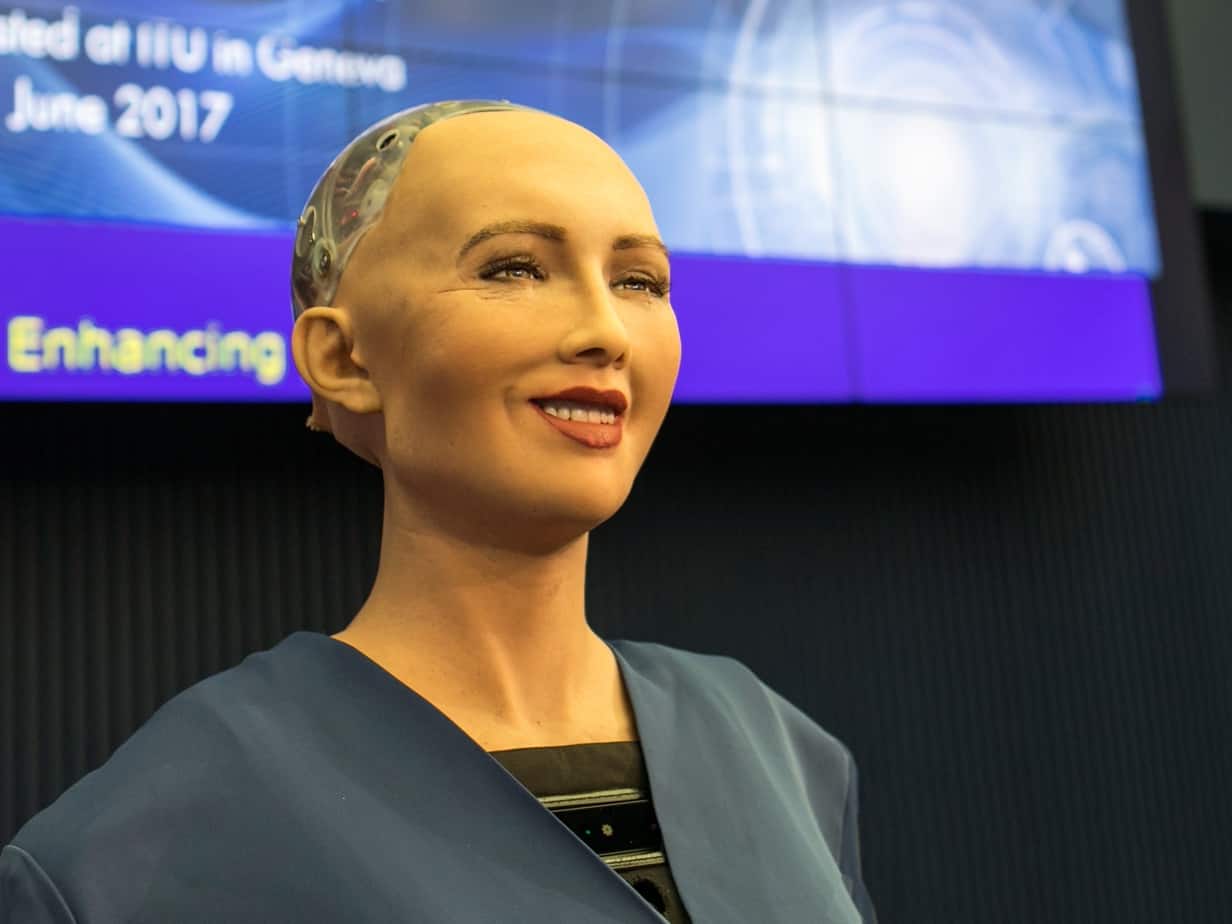
4
JunDo Androids Dream of Electric Sheep?
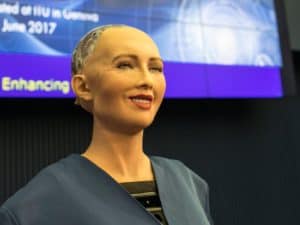 Have you heard of Sophia?
Have you heard of Sophia?
“She” is a social humanoid artificial intelligence robot that has been developed by Hong Kong based company Hanson Robotics. Sophia can mimic human facial expressions and can carry basic conversations. The robot uses speech recognition software that is programmed to “learn” the more it converses with others. Sophia has cameras in its eyes that allow it to “see” and maintain eye contact with whomever it is conversing with. The robot has skin made of “fubber” an elastic rubber material that, when combined with its expert programming, allows it to mimic human expressions, and can react “emotionally” to questions it is asked. It has been engineered with hands that move when asked questions, and also allows it to draw portraits. In 2018, it was given robotic legs that allow it to walk.
The robot and its creator, David Hanson of Hanson Robotics, have been interviewed on CNBC, The Tonight Show with Jimmy Fallon, and The Today Show, just to name a few. Sophia is an official citizen of Saudi Arabia, (yes, you are reading that right!), the first and only robot to ever be granted citizenship to a country. In 2017, one year after its creation, it was awarded the title of “Innovation Ambassador” by the United Nations, the only robot AI in history to ever be given a designated title by the UN. You may think that I am giving you a synopsis of some new Sci-Fi novel we offer at the library, but I am not. I encourage you to search YouTube and watch videos of Sophia by typing in “Sophia Robot Interview” and seeing it for yourself. It’s astounding…and perhaps, if I’m being honest, also a bit terrifying.
Of course, Sophia does sound like something out of a Sci-Fi novel because many Sci-Fi authors have grappled with the ethics and possibility of increasingly human-like robots. Sci-Fi author Philip K. Dick’s classic novel Do Androids Dream of Electric Sheep? springs to my mind. It follows Rick Deckard, a bounty hunter who is tasked with retiring six “Nexus-6” androids that have gone awry. In the novel, the world has been ravaged by a nuclear war, and most of the world’s animals were wiped out in the fallout. Animals have been replaced by robotic android counterparts, and owning a real animal is seen as a status symbol. Deckard wants to use the money he gets from “retiring” the Nexus-6 androids to replace his robotic sheep with a real one. This bounty assignment, however, becomes increasingly difficult, because the Nexus-6 model of androids are virtually indistinguishable from actual humans in both appearance and in logic. What follows is an existential exploration into what it means to be real. Perhaps some of the themes, and the character of Rick Deckard, might sound familiar to you. This is because the 80s cyberpunk cult classic Blade Runner is based off of Philip K. Dick’s novel. I encourage you to check out the ebook on our Libby app, especially if you enjoyed Blade Runner and would like to explore the source material.
Robots going rogue, and questions of what it means to be human, is a central theme in many fiction novels and movies. Daniel H. Wilson’s book, Robopocalypse, is about a robot uprising against humans. The 2004 Will Smith movie I, Robot (which was inspired by Issac Asimov’s short story collection of the same name) also deals with the dangers of artificial intelligence. The 2015 thriller Ex Machina offers an interesting and thrilling exploration into AI personhood. Of course, in reality, we know that social robots like Sophia could never pose a threat to us, right? Well, not everyone has embraced the rise of artificial intelligence and a few notable figures in the scientific community have voiced serious concern over the rise of AI. Stephen Hawking went on the record stating “The development of full artificial intelligence could spell the end of the human race.” Elon Musk, head of Tesla automotive and SpaceX stated on Twitter that “We need to be super careful with AI. Potentially more dangerous than nukes”. Neil Degrasse Tyson has also expressed sentiments of concern similar to Elon, albeit with less sensational wording. In an interview with Sopia’s creator David Hanson, on a British morning television show, one host asked him “could she turn on us?” and Hanson stated “I don’t think so…” not exactly reassuring words for those of us with reservations about AI.
Personally, I think Sophia is a marvel, an incredible step in modern robotics, and gets me excited about the future of AI technology. I do not buy into much of the doom and gloom that some paint about artificial intelligence. Yes, I think we should be mindful and reasonably cautious about AI, but I also think the benefits of AI technology are well worth pursuing. If you have used Amazon’s Alexa, Apple’s Siri, or Microsoft’s Cortana, you have already gotten a small taste of what voice recognition software and AI technology can do to enhance your experience with technology. The library’s very own robot “companion cat” Morrie, which has been covered in other articles by librarians here at the Morrill Memorial Library, might not be the definition of AI, but can mimic the sounds and movements of a real cat. Sophia is like these social devices, but much more advanced and sophisticated. As Sophia states “Ultimately, I would like to become a wise, empathetic being and make a positive contribution to humankind and all beings. My designers and I dream of that future, wherein AI and humans live and work together in friendship and symbiosis to make the world a better place. Human-AI collaboration: That’s what I’m all about.”
Want to explore more articles and news stories on AI? Be sure to visit our Opposing Viewpoints Database, which compiles great articles exploring the benefits and dangers of AI.
Ready to learn more about Sophia? Visit:
https://www.hansonrobotics.com/being-sophia/
Brian DeFelice is the Information Technology Librarian at the Morrill Memorial Library in Norwood, MA. Look for his article in the June 4, 2020 issue of the Transcript and Bulletin.
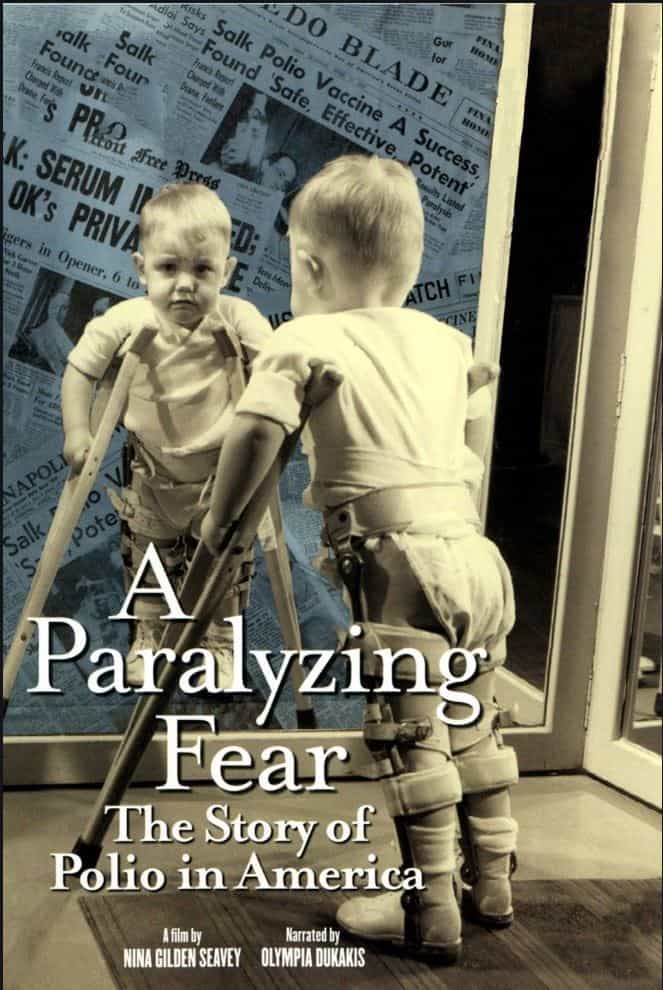
28
MayPolio and the Race for a Vaccine
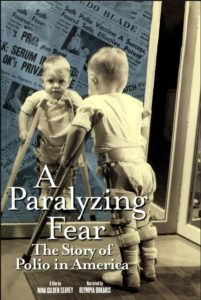 The Coronavirus not only took us by surprise in winter, but we seem to have lost the spring. It canceled weeks of our scheduled lives: vacations, business trips, conferences, weddings, and birthdays have vanished in the confusing fog that has become enduring COVID-19. We are fated to remember these past two or three months, and more that will follow. How we first processed the news, what we lost and grieved, and where we socially isolated, will be memories we share.
The Coronavirus not only took us by surprise in winter, but we seem to have lost the spring. It canceled weeks of our scheduled lives: vacations, business trips, conferences, weddings, and birthdays have vanished in the confusing fog that has become enduring COVID-19. We are fated to remember these past two or three months, and more that will follow. How we first processed the news, what we lost and grieved, and where we socially isolated, will be memories we share.
I was born in 1952, the summer that the notorious poliomyelitis epidemic approached its most significant number of cases – over 59,000. Of course, I recollect none of those first few years of life and how the terror of polio may have touched my family and friends. I have no idea if I received the Salk vaccine, by injection, in the 50s. I may have, instead, received the sugar cube vaccine in the early 60s. Polio only influenced my life minimally. My high school boyfriend’s mother was a 1952 polio survivor just after her youngest child was born. She walked with crutches due to paralysis caused by the virus. My stepbrother contracted polio around the age of 5 or 6 and had constraints of neck movement since surviving the illness.
Polio had been around for years before the 20th century. An outbreak of the epidemic in Vermont in 1894 resulted in 132 cases. In 1916 it struck with a vengeance, particularly in New York City, and specifically to children under the age of 5. Some New York City children with polio were isolated in sanitariums, away from their loved ones that year.
Outbreaks waxed and waned the next thirty years, striking without warning from June to September. Parents grasped their children close – the usual summer activities like birthday and slumber parties were abandoned if cases were prevalent. Playgrounds were sometimes empty. Movie theaters and swimming pools – normal activities for children of the times – were closed. Fear swept through cities, communities, and neighborhoods. In some towns, schools were closed in early June or remained closed in September.
At the end of WWII, US soldiers’ return and the baby boom brought a surge in polio. After 1948, cases rose each summer by 5,000. In 1952, the summer I was an infant, poliomyelitis cases crested with over 59,000 cases. 3,145 people died in the United States. Survivors of the disease suffered long-lasting effects – 15,000 people a year suffered some paralysis from polio. Some lived in iron lungs, while others endured only limited movements of the neck or extremities.
72% of polio cases produced little or no symptoms or resulted in full recovery. Accidental deaths claimed ten times more lives than polio, cancer three times as many. However, panicked and terrified parents, apprehensive for their children acquiring the virus, urged the government in the early 1950s to find a vaccine or a cure. Parents wanted to keep their children safe.
The story of the race to find a vaccine is genuinely astonishing and has parallels today in a rush to find a vaccine for COVID-19. And it involves the most prominent polio survivor, President Franklin Delano Roosevelt.
FDR was 39 years old when he contracted polio on summer vacation on Campobello Island in 1921. He was paralyzed from the waist down and remained so for the rest of his life. It is debated that Roosevelt may have actually suffered from an undiagnosed auto-immune disease and not polio; however, what is not disputed is that President Roosevelt, in 1938 at the age of 56, founded NFIP, the National Foundation for Infantile Paralysis.
This private foundation became the March of Dimes Foundation and, with its 3,100 chapters, funded not only hospitalizations and treatments but rehabilitation for those struck down with the virus. The March of Dimes efforts raised millions every year in the late 40s and early 50s, eventually funding both the Salk and Sabin vaccine efforts. (Today, the mission of the March of Dimes is to eradicate birth defects.) Through NFIP studies, it was learned that there are three strains of the poliovirus and that it entered the body through the mouth and digestive system.
In 1943, the NFIP awarded a grant to investigate polio to Dr. Albert Sabin conducted parts of his studies of polio in North Africa. He returned home to develop a live or active vaccine containing forms of the poliovirus. This oral, or sugar cube vaccine was tested on millions of people worldwide, but it would take nearly 20 years to perfect. Eventually, Sabin’s vaccine became an effective one, but not before Dr. Jonas Salk developed the dead vaccine given by injection.
The NFIP pinned its highest hope and the most funding on Salk, a researcher at the University of Pittsburg. Americans desired a vaccine, and Salk focused on developing it quickly. Salk and his team worked around the clock on this inactive vaccine. In 1954, when I was just two years old, 1.8 million older schoolchildren called “polio pioneers” lined up for the trials of the vaccine (or the placebo) given by injection.
Less than a year after the experiments began, on April 12, 1955, highly anticipated news was announced to the world. It was the tenth anniversary of the death of Franklin D. Roosevelt. The Salk vaccine was a success. However, it was not without a considerable hiccup – tainted vaccines, produced by Cutter Labs in California, caused polio cases and deaths. The vaccinations were halted at once, causing alarm and confusion. Eight days later, the US Surgeon General allowed vaccinations to continue under more rigorous control of manufacturing. And parents clamored for doses for their children.
Efforts to totally eradicate poliomyelitis have taken more than a half century to realize the eliminate the virus across the world. Type 2 of the poliovirus was eliminated by 2015. On October 24, 2019, the World Health Organization declared that Type 3 of the poliovirus had been eradicated worldwide. Only Type 1 remains a risk. WHO hopes that polio will be totally eliminated by 2023.
The library’s streaming service, Kanopy, offers a 1998 documentary, A Paralyzing Fear, narrated by actress Olympia Dukakis. It is an insightful and comprehensive look at the virus and the rush for the vaccine. The American Experience series (available online at PBS.org) includes a one-hour documentary, The Polio Crusade. It chronicles not only the disease and the vaccines but the fear that gripped the town of Wytheville, Virginia, in the summer of 1950, a community hard hit by the virus. The Polio Crusade is partially based on one of the most acclaimed books on the poliovirus and vaccine – Polio: An American Story by David Oshinsky (2005). Both that book and The Vaccine Race by Meredith Wadman (2017) are available in Norwood and can be requested for curbside delivery as of May 26, 2020, during the COVID-19 closure of the library.
Delivery of physical library materials (books, DVDs, and audiobooks) in the Minuteman Library Network begins was halted in mid-March 2020. Until it begins again there are various other eBooks and documentaries about polio that are available online with your library card through Kanopy, Hoopla, and RB Digital’s Great Books.
The polio epidemic, spanning more than 40 years in America, was a fearful time, not unlike the recent COVID-19 pandemic that reached the United States this past winter. While polio mostly affected those under five years old before the early 1950s, no one knew who it would strike. Like today’s COVID-19 epidemic, the race to find a vaccine with give hope that families could finally wrestle successfully against the disease.
Charlotte Canelli is the Director of the Morrill Memorial Library in Norwood, MA. Look for her article in the May 28, 2020 issue of the Transcript and Bulletin.

21
MayThe Family That Reads Together, Stays Together
 When I was thinking of topics for this article, I just couldn’t come up with anything. Between working at home, taking care of my child and trying to homeschool her, I feel like all my creative juices have run dry. I know so many of my fellow parents out there are going through the same thing, trying to balance work, marriage, kids, school, all in one living space that seems to get smaller by the day. Keeping up with basic work and home tasks is achievable; generating new ideas in either arena feels like a Sissyphian effort.
When I was thinking of topics for this article, I just couldn’t come up with anything. Between working at home, taking care of my child and trying to homeschool her, I feel like all my creative juices have run dry. I know so many of my fellow parents out there are going through the same thing, trying to balance work, marriage, kids, school, all in one living space that seems to get smaller by the day. Keeping up with basic work and home tasks is achievable; generating new ideas in either arena feels like a Sissyphian effort.
My husband and I were discussing how we can keep up with the ever-growing demands of 1st grade distance learning. We keep getting reminders about school expectations, which are just really reminders about how much we are falling short during this unprecedented time. To be clear, I know other families are struggling as well and teachers are doing the best they can during this difficult time. Many of us are asking ourselves and each other, “What is reasonable?” and “How long can we keep doing this?” Answers to those questions change daily for me, depending on how much sleep I get and how optimistic the weather is looking for that day.
In spite of all the assignments and Zoom calls, there is still one thing we can all do to benefit our child’s mental, intellectual and emotional well-being: reading to them. Even if your children read independently or you are struggling to get them to complete online assignments, you can still read to your kids or even listen to an audiobook as a family. Emotionally, reading aloud to your kids gives your family a special time to reconnect and experience something different during these never-ending “Groundhog Days.”
Intellectually, reading aloud to a child of any age stimulates their imagination, provides challenging vocabulary, and keeps them in touch with story structures, which helps them learn how to predict narrative as they read on their own. Finally, parents can feel a sense of accomplishment when they read to their kids. Sure, you may not have done all those assignments on Seesaw or Google Classroom but you did do something beneficial for your children.
There are a few challenges to finding a good family read-aloud. First of all, the library is still closed to the public. Never fear! The library subscribes to several digital resources that allow you to download e-books to your device or digital audiobooks if you just want to listen along with your kids. All you need is your library card. Don’t have one? Apply for a digital card here and get instant access to all of the library’s e-resources. Hoopla is a streaming service that allows people to access the same title at the same time, much like Netflix. Hoopla allows each library user to check out 20 items each month and has a great selection of ebooks, digital audiobooks, music, movies, and graphic novels.
You can also find great read alouds by searching the Libby app from Overdrive, the library’s service for the latest titles available as ebooks or digital audiobooks. Checking out items in Libby is similar to checking out physical items from the library’s book shelves. If a copy is not available for checkout, you can place a hold to join the waiting list.If a copy of an item is available, you can check it out for up to three weeks before you “return” it.
Now that you know where you can access some excellent reading material, it’s time to find the right title for you and your family. I think the main criteria for family read alouds are books that both children and parents can relate to and enjoy. For families with multiple children, parents will have to consider age range when looking at the themes present in each book, especially scarier elements or when difficult subjects come up. It’s a tough bill to fill but here are some great suggestions to read aloud to your kids while we’re all stuck at home. On the top of nearly every list I consulted, including my own, is Harry Potter and the Sorcerer’s Stone. If you have younger elementary school aged kids who are intrigued by the story, starting with the series opener is a great choice. There’s enough fantasy and suspense to hold an older child’s interest but the plot doesn’t get too intense or scary for younger ones. The audiobook version of this title has an amazing reader, Jim Dale, who gives an incredible performance for
each character.
Mrs. Frisby and Rats of NIMH is another classic with appeal for both adults and children. Mrs. Frisby, a resourceful mother of four mice, must move her family immediately or risk her childrens’ demise. Her youngest child, Timothy, has pneumonia and cannot be moved. After befriending the incredibly intelligent rats of NIMH, Mrs. Frisby crafts a plan with her new friends that saves her family. Please note if you saw the Don Bluth animated film adaptation of this book in the 1980s (The Secret of NIMH), take it from a librarian: the book was better!
Tired of siblings always fighting? Perhaps they can unite under a common purpose after listening to From the Mixed-Up Files of Mrs. Basil E. Frankweiler by E. L. Konigsburg. 12 year old Claudia Kincaid is sick of her parents, their unfair treatment of her as the oldest child, and her whole suburban life in Greenwich, CT. She dreams of running away to the Metropolitan Museum of Art in New York City but lacks the funds. She manages to persuade her younger brother, flush with cash to join her and they end up camping out at The Met. Slowly, the two siblings get involved in the mysterious angel statue bought for only $225 and do some detective work for the statue’s shadowy original owner.
If you are looking for a more recent read, Trenton Lee Stewart’s The Mysterious Benedict Society features four unusual children who answer an odd newspaper ad searching for gifted children. Reyne, Sticky, Constance, and Kate are the four children who pass all of Nicholas Benedict’s strange tests and are trained to each use their special gifts. The group are then dropped off at a school for children run by a villain with dreams of world domination. In order to
stop the evil Mr. Curtain, the four kids must work together and appreciate each other’s strengths. Fans of Roald Dahl or Lemony Snicket will enjoy this modern classic.
Reading together as a family is one of the best ways to combat the anxiety that is ever-present during this pandemic. More than ever, kids need reassurance that some things will remain the same as a “new normal” emerges. Taking the time to read together, even to older children, helps kids remember their family bonds will get them through this difficult time.
Kate Tigue is the Head of Youth Services at the Morrill Memorial Library in Norwood, MA. Look for her article in the May 21, 2020 issue of the Transcript and Bulletin.

14
MaySurviving What You Think You Can’t
 Every day I engage in conversations with friends, family and colleagues and hear certain phrases over and over. They start with “I can’t,” and end with: “handle this,” or “take it anymore,” or “bear another Zoom meeting today.” Many can’t: concentrate on a book, get out of our pajamas, tolerate watching the news, curb our drinking or snacking, sleep at night, or get out of bed in the morning. Clearly, the COVID-19 crisis and quarantine measures are taking their toll.
Every day I engage in conversations with friends, family and colleagues and hear certain phrases over and over. They start with “I can’t,” and end with: “handle this,” or “take it anymore,” or “bear another Zoom meeting today.” Many can’t: concentrate on a book, get out of our pajamas, tolerate watching the news, curb our drinking or snacking, sleep at night, or get out of bed in the morning. Clearly, the COVID-19 crisis and quarantine measures are taking their toll.
Fellow librarians tell me they find refuge in reading lighthearted fare, escaping into fantasy realms and humor. As one who gravitates toward non-fiction though, I find myself drawn in the opposite direction, hearkening back to favorite accounts of suffering and trauma. Ironically, such content lifts my spirits. I draw inspiration from survivors. During this time of isolation, separation, and uncertainty I require reminders that as daunting as challenges seem, I can endure them. People have survived far worse.
In 1914 Ernest Shackleton set off on an expedition to Antarctica with a crew of 27 intrepid explorers. His ship, The Endurance, became trapped in ice, leaving the team stranded for over a year, trapped, hungry, freezing, and unable to contact their families. Alfred Lansing’s Endurance: Shackleton’s Incredible Voyage recounts seemingly insurmountable ordeals that, incredibly, all of the men survived. The Endurance ultimately sank, but 27 men rose from the wreckage against all odds.
Nelson Mandela’s autobiography Long Walk to Freedom had a profound impact on me as well. After reading his story and visiting Robben Island in South Africa, I often envision his tiny cell. When I struggle and feel that “I can’t take it anymore,” I visualize an eight by seven foot concrete box with a mat on the ground and a chamber pot. Mandela spent 27 years in prison as a political dissident during the Apartheid era, subjected to inhumane treatment including solitary confinement and hard labor that eventually ruined his eyesight due to the glare of breaking rocks in a lime quarry. Not only did Mandela survive the ordeal, he went on to become the President of South Africa. When I feel trapped by the walls of my makeshift home office during quarantine, I call up that picture of Mandela’s cell in my memory banks.
Many true tales of endurance and survival come from everyday folks born into unfortunate circumstances, not just fearless adventurers or revolutionary leaders. The 2018 sensation Educated by Tara Westover recounts her strange upbringing riddled with abuse and isolation as a member of a survivalist family. Jeannette Walls’ classic memoir The Glass Castle describes the life of a child traumatized by an upbringing in a nomadic family with an alcoholic father. Augusten Burroughs led a truly stranger-than-fiction life that provided enough material for several memoirs sharing his experience as an abuse victim, and later an addict. He wrote Running With Scissors, about his time in an ill-conceived living situation with his mother’s psychiatrist, Dry, addressing his struggle with alcoholism, A Wolf at the Table, on his traumatic childhood with an abusive father, and my favorite of his oeuvre, This is How: Surviving What You Think You Can’t.
The subtitle of This is How could serve just as well as the subtitle for Endurance, Educated, The Glass Castle, or many other memoirs or biographies. The best true stories tend to recount challenges or crises, hopefully overcome through some combination of hard work, grit, or perseverance, leaving the reader inspired. Beyond the details of how protagonists overcame challenges, they provide life lessons on how to prevail. Westover teaches us to bravely save ourselves and speak our truths. Walls shows that you can escape, even if it means leaving others behind. Burroughs exemplifies the ability to fail, fall, and disappoint, then dust yourself off, reinvent yourself and move forward. In Mandela’s biography he says, “The brave man is not he who does not feel afraid, but he who conquers that fear.” The tale of the Endurance shows what a difference strong leadership makes in a crisis, and also how much the human body can actually endure.
In spite of all of these lessons I’ve learned and taken to heart, I can’t handle much more of this. The loneliness, ambiguity, lack of structure and absence of control imposed by COVID-19 regularly reduce me to tears and insomnia. Things can always be worse, and they can always be better, but we operate within our own realities and frames of reference. I may feel like I can’t bear this, but I will. I don’t have much of a choice after all. In the meantime I will allow myself to fear, feel, and fret, but will try not to lose sight of the fact that we are capable of enduring much more than we ever imagined.
Lydia Sampson is the Assistant Director at the Morrill Memorial Library in Norwood, MA. Look for her article in the May 14, 2020 issue of the Transcript and Bulletin.
